- Home
- Alexandre Dumas
Georges Page 2
Georges Read online
Page 2
The reference to Scott is not the only literary allusion, for Georges is deeply steeped in broad readings going back to ancient authors and myths. Without disturbing the pace and flow of the narrative, Dumas tells his nineteenth-century story in a rich web of literary allusions that anchored the new tale he was telling in the storehouse of stories familiar to the reader, from Venus, Diana, and the hetæra Lais of Corinth to Jupiter, Helios, and Enceladus. These references also serve to enhance the sense of the novel’s intelligence, a sensibility that includes narrator as well as hero. The very choice of the bird’s-eye view of the island with which chapter 1 opens is thus revealed as a technique Dumas adopted from Alain-René Le Sage’s Le Diable boiteux (The Limping Devil), in which the title character, the devil Asmodée, takes the student Don Cléofas above Madrid and lets him see through rooftops and walls. Dumas’s narrator thus plays the part of the devil. As Dumas makes explicit in two references and an allusion, his choice of the île de France as a setting is also an acknowledgment of Bernardin de Saint-Pierre’s immensely popular island love story Paul et Virginie: The narrator states at the beginning that the reader may have guessed that the tomb he describes at the Church of Pamplemousses is that of Bernardin de Saint-Pierre’s star-crossed lovers whose sad poetic memory is evoked when Georges returns to the island in chapter 4; and Paul et Virginie is also the book Georges reads when he awaits his execution—not, as the priest expected, the Bible. Georges and Sara’s story may have grown in part out of Paul et Virginie, but Georges rewrites the sad love story as one that does not end with the faithful lovers’ tender union in death at Cape Malheureux. Instead, Dumas suggests that there is a future on earth for his romantic couple.
Other references are made to characters, works, and scenes such as Adamastor from Camoens’s Lusiads, Cervantes’s Don Quixote, Samuel Richardson’s Clarissa, Lord Byron’s Cain, and the witches’ night scene at the Brocken in Goethe’s Faust. Such allusions, common in novels of the period, also amount to a pact with the reader who, a century and a half ago, would have been expected to catch most of them, whereas the modern reader will need annotations for many. The novel’s multiple noteworthy allusions to Satan and to various devils from literature—Asmodée, Mephistopheles, Lucifer—are part of the work’s Romantic spirit.
Is Georges then a genre piece? Is this novel that must have circulated widely in the nineteenth century, that was translated (often freely) into English, German, Spanish, Italian, Dutch, Norwegian, and Swedish, and was adapted for the stage in Paris, nothing but a representative (though perhaps particularly vivid) work of a line of fiction that one could call the French Hollywood of its time? This is, of course, a rhetorical question, even though Georges could still be turned into an exciting Hollywood film today. The negative answer my question calls for is given by the fact that Georges is not only a hero like d’Artagnan and Dantès, but also a man of color, a mulatto—and the word mulâtre appears more than fifty times in the French text of the novel. Like Dantès, Georges reappears in his original world as a new, “transfigured” man, but Georges’s disguise is that he is often taken for white; and like d’Artagnan he has to face his eternal antagonists, but in Georges’s case the antagonists he confronts are also the embodiment of color prejudice. This makes Georges exceptional in Alexandre Dumas’s own œuvre, for it is the only novel in which Dumas—the celebrated, though at times also reviled, man of color—focuses on the color complex.
Léon-François Hoffmann, a most careful critic of Dumas’s Georges who ranks it among Dumas’s best, yet too-little-known works, focused on this aspect of the novel. He found that in Georges, Dumas employed, but did not get carried away by, melodramatic plot machinations and that he instead wrote a complex novel in the “noble” sense of the word. Was this the case because of his serious theme: that of the struggle against the vulgar yet common color prejudice of M. de Malmédie and his son Henri, similar to that which Dumas—as Hoffmann amply documents—was also exposed to? Georges Munier is, in this context, a particularly intriguing and strong character, a fully formed mixed-race hero, whose psychological development from age twelve to twenty-six, from sensitive and vulnerable childhood to self-possessed maturity, is well drawn in the novel against the background of the racial pressures he experiences. What distinguishes Georges, then, is that it is a problem novel, in addition to everything else that it takes on so well; and the problem of color prejudice that it examines is one that has not gone away and seems particularly relevant in our own days.
The political dialogue between the demagogic Antonio who plays the race card and the idealistic rebel Laïza who invokes the principle of liberty is as strong an indication of the novel’s timeliness as is Georges’s quip in defense against Antonio’s hypocritical attempt to subvert his leadership by stressing indignantly that Georges “loves a white woman!” Georges responds that “there is another victory for men of color, for the white woman loves me, too.” (Et c’est un triomphe de plus pour nous autres hommes de couleur…car la fille blanche m’aime.) Dumas’s narrative position is clear, for Antonio who plays up the issue of racial loyalty is, in fact, the traitor in this book; and Georges, who has given his slaves freedom and four piastres each, has only the noblest of motives. It deserves mention in this context that Georges was published eight years after slaves had been freed in the British colony of Mauritius and five years before France would free slaves in its own colonies.
What informs the novel is not only the conflict over African slavery, first abolished in France in 1794, but then reinstated in 1802 (by Napoleon!) and ended only in 1848. Neither is it prejudice against all nonwhites that Georges excoriates or an attack against all forms of bias that the novel exemplifies: one only has to remember the hardly flattering description of the Chinese whom the narrator twice calls “the Jews of the colony,” or the account of the many blacks who, unlike the idealistic Georges who is ready to lead them, do not participate in the slave revolt because they find the barrels of rum the governor sets out for them more enticing. It is telling that Georges’s brother, Jacques, whose sarcasm in this matter seems vindicated by the plot, has been making his living as a slave trader.
The book’s central tension is between rich white Creoles and equally rich though discriminated-against mulattoes on île de France. The question is how the bigoted and aggressive men in the white Creole Malmédie family can be restrained by the mixed-race Muniers who are also rich and hold slaves. In fact, Georges is a multimillionaire who can afford to free his slaves. Georges is not so much an abolitionist or a black novel then, but, as Hoffmann has argued, a “mulatto novel.” And it is in this aspect that the author’s autobiographical investment in the novel has been sought, for Georges Munier is a man of color who was imagined by Alexandre Dumas, France’s most famous nineteenth-century man of color. Dumas would seem to invite such a reading when he connects his hero Georges with the Chevalier de Saint-Georges, a Guadeloupe-born mixed-race composer and military leader in whose American legion of mulattoes the novelist’s father, Thomas-Alexandre Dumas-Davy de la Pailleterie, once served.
There was, however, no biographical connection between Dumas and Mauritius; in fact, Dumas had never been on the île de France when he wrote Georges and he would also never visit the island later on. Yet he rendered his setting so vividly in the novel that one is surprised to realize that he did so only with the help of secondary sources, among them accounts by his friend Félicien Malleville, a Mauritian. Perhaps Dumas’s île de France was a symbolic stand-in for another island to which the writer traced his own roots, the American island that he lets Laïza mention, “Saint-Domingue, now called Haiti” (a distinct echo to “Port Louis, formerly Port Napoleon”), forever associated with the revolution undertaken by people of color in the name of liberty.
If Dumas’s île de France carries the legacy of his ancestral Haiti, the island of a successful rebellion, it is also very much the island of love. Dumas may have been inspired to tell an interracial love story against a re
volutionary island background by a then still-young tradition of French fiction about race, romance, and revolution, often informed by tales coming out of Haiti and in which mulattoes played important roles. Victor Hugo’s Bug-Jargal (1826) was an early milestone in that tradition. Alexis de Tocqueville’s travel companion Gustave Beaumont wrote the novel Marie (1835), which features a rebellious mulatto named Georges. The New Orleans expatriate and free man of color Victor Séjour published “Le Mulâtre” in the Revue des Colonies (1837), the Parisian organ of a radical society of People of Color and edited by Martinican Cyrille Charles Auguste Bissette. It is the story of a mulatto named Georges who becomes a rebel against his own white father, and it begins in Saint-Marc, “a little town of Saint-Domingue, these days the Republic of Haiti.” Dumas, who later on helped the Louisianan in his career as a dramatist in Paris, may have known him as early as the 1830s. In any event, Séjour’s “Mulâtre” was published in the very journal to which, one year later, Dumas sent an open letter against a maliciously circulated rumor suggesting that Dumas would be contributing poetry to the pro-slavery Revue coloniale. In that letter Dumas stated that his sympathies were for the opposite party, as was well known among all whom he counted as “frères de race et des amis de couleur” (race brothers and colored friends).
Dumas may have also read “Les Épaves” by Fanny Reybaud, a popular novella of 1838 with a heroic, Paris-educated mulatto genius who is enslaved by a vicious and jealous white Creole, but then dramatically freed by and married to a white aristocratic heiress at the very end; the Danish fairy-tale writer Hans Christian Andersen adapted Reybaud’s tale in his romantic play Mulatten (1840). The tradition of which Georges was a part continued after Dumas. In his novel O Mulato (Mulatto, 1881), the Brazilian anti-slavery novelist Aluízio Azevedo, for example, represented the well-educated and handsome mixed-race protagonist Raimundo, whose love for the beautiful and white Ana Rosa is vehemently opposed by her father.
It is not surprising that even though Georges remains relatively unknown today, Dumas has been a fairly constant reference point for African American intellectuals, as Michel Fabre has shown. Thus when the runaway slave William Wells Brown went to the 1849 Peace Congress in Paris as one of twelve delegates from Massachusetts, he desired to meet Dumas. This was still before Brown became the first African American to write a novel in English. He had a letter of introduction, but the connection did not work out. Yet one night at the opera, Brown noticed “a light-complexioned mulatto, apparently about fifty years of age,—curly hair, full face, dressed in a black coat, white vest, white kids,—who seemed to be the centre of attraction not only in his own circle but in others. Those in the pit looked up, those in the gallery looked down, while curtains were drawn aside at other boxes and stalls to get a sight at the colored man. So recently from America where caste was injurious to my race, I began to think that it was the wooly head that attracted attention when I was informed that the mulatto before me was no less a person than Alexandre Dumas. Every move, look and gesture of the celebrated romancer were watched in the closest manner by the audience.” Frank J. Webb signaled that he was writing suspenseful fiction in Dumas’s vein by letting his gory thriller “Two Wolves and a Lamb” (1870) end on the île Ste-Marguerite—an island famous as the setting of L’Homme au masque de fer (The Man with the Iron Mask), the last volume of Dumas’s Musketeers series.
Brown saw Dumas in person, and Webb was his contemporary and may have also met him in Paris, but later African American authors who did not would invoke Dumas together with Pushkin as writers to be held in high esteem as a source of racial pride and as implicitly supporting a critique of the American racial scene. This is true, for example, for a character in Frances Harper’s novel Iola Leroy (1892) who proclaims that “Alexander Dumas was not forced to conceal his origin to succeed as a novelist.” In Charles Chesnutt’s often ironic short-story collection The Wife of His Youth (1899) the narrator says about Solomon Sadler who makes it his business to know everything about colored men of distinction: “He could give the pedigree of Alexander Pushkin” and “the titles of scores of Dumas’s novels (even Sadler had not the time to learn them all).” In 1914 Chesnutt also devoted a lively address to Dumas, in which he reviewed Dumas’s family history and literary career and offered a critical assessment of the writer whom “one reads solely for the story” and whose “invention was kaleidoscopic in its variety and spontaneity.” Chesnutt found that Dumas’s “heroes are men of blood and iron, who know what they want and proceed to take it, by artifice at times but preferably by the strong hand.” Addressing the question of whether Dumas’s race mattered, Chesnutt surmised: “There was…about him a certain naïveté, an abounding good-nature, and a verve or swing which is almost as well punctuated as ragtime; and these, as well as his robust physical vigor, his brown complexion and his curly hair, may perhaps be safely attributed to his dark blood. He was not ashamed of it, often mentioned it with not the least self-consciousness—it was of no social or business disadvantage for him in France, where talent has always been recognized and rewarded in absolute disregard of race or color—and he wrote one novel, Georges, the Planter of the Isle of France, of which the race problem in one of its aspects formed the motive.”
In the Harlem Renaissance, Gwendolyn Bennett published the poem “Lines Written on the Grave of Alexandre Dumas” in the pages of Opportunity, opening with the address, “Thou, great spirit, wouldst shiver in thy granite shroud / Should idle mirth or empty talk / Disturb thy tranquil sleeping.” Langston Hughes viewed Dumas’s successful career as a sign that freedom for colored writers was far greater in France than in the United States. Thus Hughes reported that his father responded to young Hughes’s admiration for Dumas with the brief comment, “Yes, but he was in Paris where they don’t care about color.” Later Hughes wrote in his poem “Prelude to Our Age”: “In other lands Dumas and Pushkin wrote / But we, / Who could not write, made songs: Swing low, sweet chariot….” In 1936 John F. Matheusand W. Napoleon Rivers prepared an annotated school edition of Dumas’s Georges in French that was reprinted in 1970. And in White Man, Listen! (1957), Richard Wright held up an at first unidentified passage from The Count of Monte Cristo and commented: “Did a Negro write that? It does not sound Negroid.” Dumas was, Wright emphasized, “a Negro according to American racial codes,” yet “his being a Negro was the least important thing about him.” This was so because “he could attend any school he wanted to;…he could engage in any profession he wanted to; he could live where he wanted to; he could marry whom he wanted to; and if he had the mind and talent, he could win fame if he wanted to. He did win fame. He was at one with the culture in which he lived, and he wrote out of the commonly shared hopes and expectations of his age.” Wright’s conclusion about Dumas is in implicit contrast to the situation of African American writers who were not fully at one with America: “We can say that Dumas was integrated with the culture of France and was a Frenchman.”
Still, while Alexandre Dumas has been a favored writer among African American writers and intellectuals, Georges seems not yet to have enjoyed a wide readership among them. Not even Langston Hughes, with his long-standing interest in writing about mulatto themes in poetry, drama, and fiction, or Richard Wright, whose long years of Parisian exile made him more deeply aware of the French literary tradition, appear to have known Georges. The same also seems true for Frederick Douglass, who was exceptional among African American intellectuals in angrily criticizing Dumas for having “never said one word for his race” (as one of his contemporaries reported). This, a pretty clear suggestion that Douglass had not read Georges, did not prevent Douglass from taking his second wife to see the Château d’If, the setting of The Count of Monte Cristo, “because the genius of the Negro writer had woven around it such a network of enchantment.” Frederick Douglass may have been reluctant to think of Dumas as a race hero, but he did want to see Gustave Doré’s statue of the famous writer in Paris.
That statue is no
t the only indication of Dumas’s public reputation in France. The high esteem in which Alexandre Dumas is held in that nation can be measured by the fact that in November 2002 Jacques Chirac’s government transferred Dumas’s ashes to the Panthéon. Dumas is the first author of color to receive this, the highest honor in France. At the ceremony, there were readings from the Les Trois Mousquetaires and Le Comte de Monte-Cristo. Let us hope that soon Georges will also be read with renewed interest in France and, in this lively new translation by Tina Kover, in the English-speaking world.
I
L’îLE DE FRANCE
Have you ever, on a long, cold, melancholy winter night—alone with your thoughts and the wind whistling through the hallways, the rain pounding against the windows—have you ever leaned your forehead against the mantel, absently watching sparks dance on the hearth, and longed to flee our wet and muddy Paris for some enchanted oasis? Somewhere fresh and carpeted in green, where you could lie in the shade of a riverside palm tree and doze off without a care in the world?
Well, the paradise of your dreams exists! Eden awaits you; the water flows clear and bright there, falling and surging up in bright dust; the palm fronds wave gently in the soft sea breeze like feathers in a genie’s cap. The jambosa trees, laden with iridescent fruit, stand ready to offer you their sweetly scented shade. Come, follow me now.
Let us make for Brest, warlike sister of bustling Marseille, standing sentinel over the waves. Choose a vessel from the hundreds anchored in its port—perhaps a brigantine, long-masted, lean, and light-sailed, fit even for the hardy pirates dreamed up by Walter Scott, that romantic poet of the waves. It’s early September, the perfect time to begin a long voyage. Let us board our chosen ship and leave summer behind in our quest for spring! Adieu, Brest, Nantes, Bayonne—adieu, France!

 The Count of Monte Cristo, Illustrated
The Count of Monte Cristo, Illustrated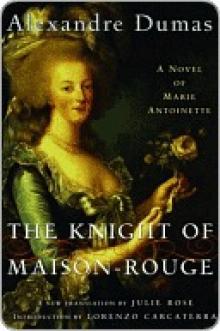 Knight of Maison-Rouge
Knight of Maison-Rouge![The Three Musketeers - Alexandre Dumas - [Full Version] - (ANNOTATED) Read online](http://i1.bookreadfree.com/14/the_three_musketeers_-_alexandre_dumas_-_[full_version]_-_annotated_preview.jpg) The Three Musketeers - Alexandre Dumas - [Full Version] - (ANNOTATED)
The Three Musketeers - Alexandre Dumas - [Full Version] - (ANNOTATED)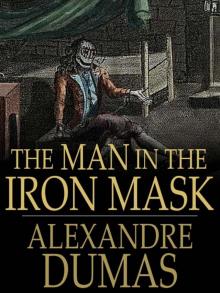 The Man in the Iron Mask
The Man in the Iron Mask The Count of Monte Cristo (Penguin Classics eBook)
The Count of Monte Cristo (Penguin Classics eBook)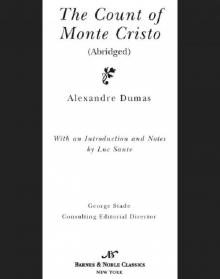 Count of Monte Cristo (abridged) (Barnes & Noble Classics Series)
Count of Monte Cristo (abridged) (Barnes & Noble Classics Series) The Women's War
The Women's War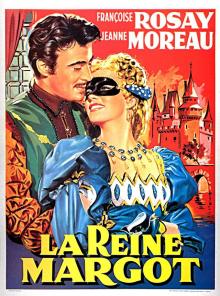 La reine Margot. English
La reine Margot. English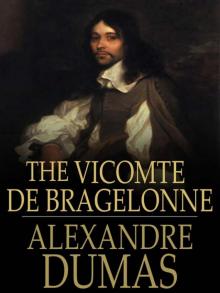 The Vicomte de Bragelonne
The Vicomte de Bragelonne__english_preview.jpg) La dame aux camélias (Novel). English
La dame aux camélias (Novel). English The Count of Monte Cristo
The Count of Monte Cristo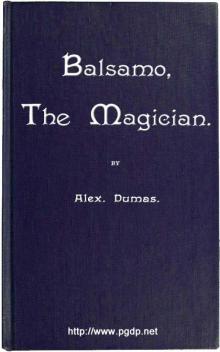 Balsamo, the Magician; or, The Memoirs of a Physician
Balsamo, the Magician; or, The Memoirs of a Physician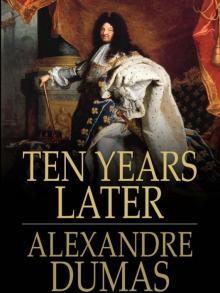 Ten Years Later
Ten Years Later The Romance of Violette
The Romance of Violette The Mesmerist's Victim
The Mesmerist's Victim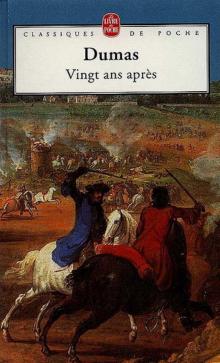 Vingt ans après. English
Vingt ans après. English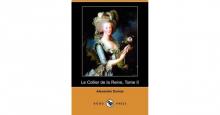 Le collier de la reine. English
Le collier de la reine. English Taking the Bastile; Or, Pitou the Peasant
Taking the Bastile; Or, Pitou the Peasant The Hero of the People: A Historical Romance of Love, Liberty and Loyalty
The Hero of the People: A Historical Romance of Love, Liberty and Loyalty Louise de la Valliere
Louise de la Valliere Les Quarante-cinq. English
Les Quarante-cinq. English Ange Pitou (Volume 1)
Ange Pitou (Volume 1) The Royal Life Guard; or, the flight of the royal family.
The Royal Life Guard; or, the flight of the royal family.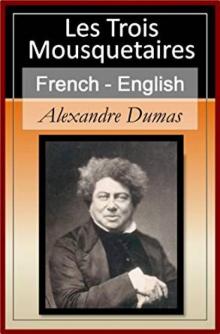 Les trois mousquetaires. English
Les trois mousquetaires. English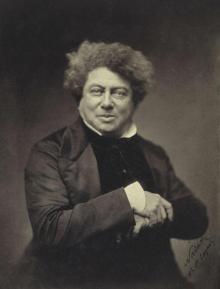 Une fille du régent. English
Une fille du régent. English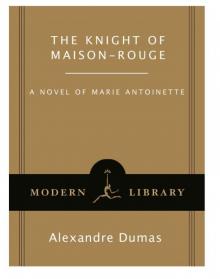 The Knight of Maison-Rouge
The Knight of Maison-Rouge The Count of Monte Cristo (Unabridged Penguin)
The Count of Monte Cristo (Unabridged Penguin) Ange Pitou
Ange Pitou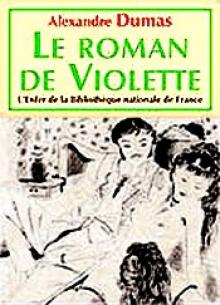 The Romance of Violette (vintage erotica)
The Romance of Violette (vintage erotica)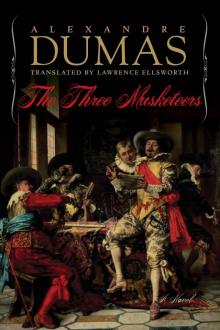 The Three Musketeers
The Three Musketeers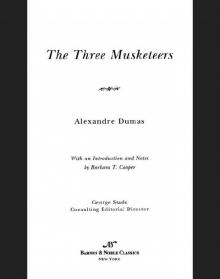 Three Musketeers (Barnes & Noble Classics Series)
Three Musketeers (Barnes & Noble Classics Series) Georges
Georges Man in the Iron Mask (Barnes & Noble Classics Series)
Man in the Iron Mask (Barnes & Noble Classics Series)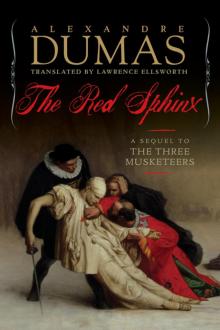 The Red Sphinx
The Red Sphinx